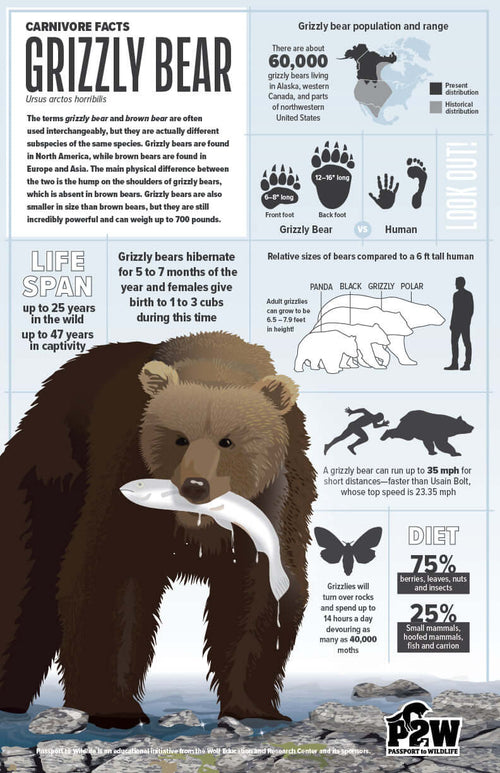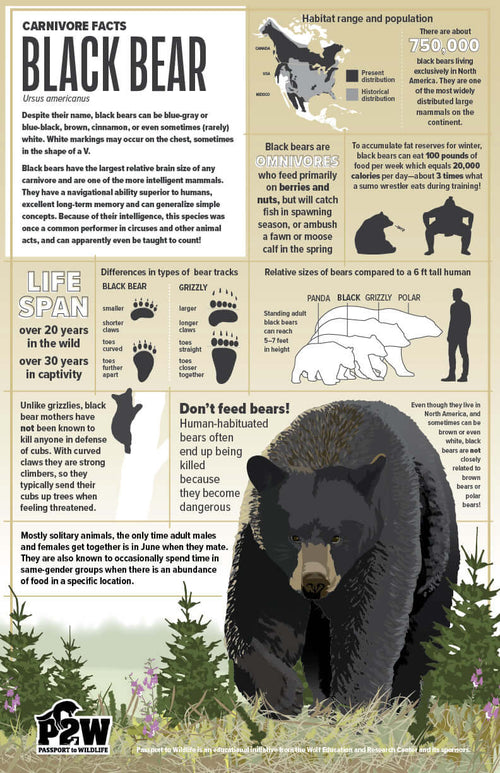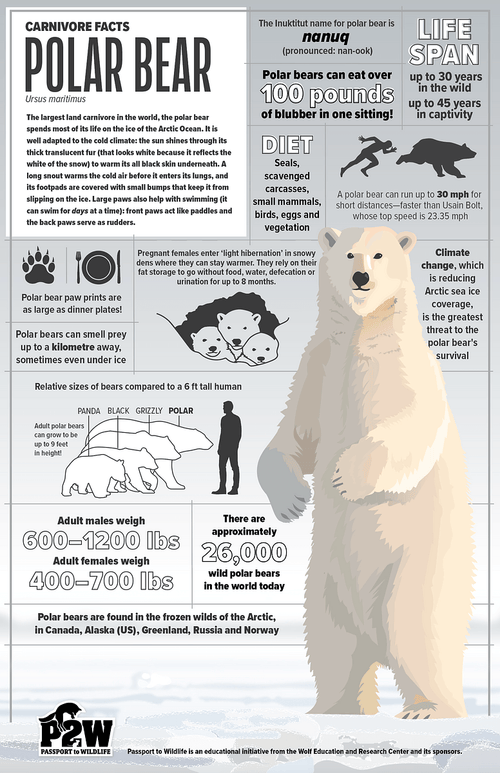No Products in the Cart
Autumn With The American Black Bear: The Final Feast Before Winter

Across the country, as children return to school and our calendars fill with festivals, football games, and the slow turn toward the holidays, something far more ancient is unfolding in the woods.
The American Black Bear is entering the most urgent season of its year.
Fall is not simply a shift in weather for a bear— it is a race, a marathon of appetite, a biological countdown toward winter’s long sleep.
Unlike humans, who may look at autumn and think of warm drinks and sweaters, a bear looks at autumn and sees one thing:
Time is running out.
HYPERPHAGIA: WHEN A BEAR’S LIFE BECOMES A FULL-TIME MEAL
Fall marks the arrival of hyperphagia, a period when black bears eat nearly nonstop. A healthy adult may consume 15,000–20,000 calories a day—a number echoed in the SLQ’s seasonal look at bear diets ().
To put that in perspective, that’s the human equivalent of eating:
- 30 cheeseburgers,
- or 10 large pizzas,
- or… a buffet large enough to scare most restaurants.
A bear doesn’t eat for pleasure this time of year.
It eats to survive winter.
THE FALL MENU: WHAT A BLACK BEAR ACTUALLY EATS
If spring is the season of tender shoots and summer is the season of berries, then fall is the season of fat-rich, energy-packed foods.
1. Berries (the last crop of the year)
Huckleberries, elderberries, chokecherries, and wild grapes build the first layer of fat. Where berry crops are strong, bears flourish. Where berries fail, bears roam.
2. Hard Mast: The Calorie Kings
- Acorns
- Beechnuts
- Hazelnuts
- Pine nuts
These foods are small, but they are gold mines of fat. Entire bear populations rise and fall with acorn cycles.
3. Insects and Carrion
Grubs, beetles, ant colonies—reliable, protein-rich sources. If a deer or elk succumbs to early cold or illness, bears will readily scavenge.
4. Salmon (regionally)
In the Pacific Northwest, late salmon runs create a vital fall buffet. Ravens, eagles, and coyotes gather nearby, forming a seasonal “food web festival.”
5. Human Food Sources (a dangerous temptation)
Fallen apples, unpicked fruit, livestock feed, garbage, birdseed— these often become the leading cause of human-bear conflict in the fall.
Just as the SLQ warns against human food habituation in bears (), autumn amplifies the risk: a bear focused desperately on calories loses caution.
THE BEAR’S TERRITORY GROWS WITH ITS APPETITE
In summer, a black bear may stay within a few square miles. But once fall arrives?
They can roam 20, 30, or even 40+ miles in a single day.
Why?
Because fat doesn’t grow in one place. A bear must:
- Follow berry patches as they ripen at different elevations
- Track nut-producing trees
- Explore new drainages
- Check old feeding sites
- Visit riverbanks for late salmon
- Investigate carcasses
- Test orchards (wild or otherwise)
This wandering makes bears unpredictable in the fall— curious, bold, and determined.
FAMILY IN THE FALL: WHAT MOTHER BEARS TEACH
A mother black bear’s fall lessons are some of the most meaningful of a cub’s life.
She teaches them:
- Where food hides
- How to break logs, dig up roots, and climb trees
- How to avoid predators (wolves, mountain lions, large males)
- How to stay away from roads and houses
- How to follow her… and when to stay perfectly still
Cubs born last winter now wobble behind her as chubby, bright-eyed learners. Their survival depends almost entirely on how well she navigates the fall food race.
If she miscalculates— if food is scarce, if drought hits, if early snow falls— the cubs suffer first.
THE BEAR & THE FOREST: AN ECOLOGICAL PARTNERSHIP
What a bear eats in fall shapes the entire ecosystem.
Bears are master seed dispersers
Every berry ingested becomes a seed scattered miles away. A bear’s scat is sometimes called “forest starter mix.”
Bears turn over logs, aerate soil, and shape habitat
In their frantic search for insects and roots, bears break open rotting logs, creating microhabitats for amphibians, fungi, and invertebrates.
Bears feed the scavenger chain
Scraps from salmon or carrion feed:
- ravens
- eagles
- foxes
- coyotes
- even owls and hawks as noted in predator-scavenger relationships throughout the SLQ ().
Fall is when a bear’s influence on the forest is at its peak.
PREPARING THE DEN: THE LAST TASK OF FALL
Only when a bear’s internal clock says “You’ve eaten enough” —does it search for a den site.
They look for:
- Hollow trees
- Rock crevices
- Fallen logs
- Under roots
- Hillsides they can claw into
The den doesn’t have to be perfect. It just has to be quiet, safe, insulated, and away from winter storms.
Cubs born this winter will enter the world in this small space— the final destination of the fall feast.
HUMANS IN FALL BEAR COUNTRY: HOW NOT TO RUIN THE SEASON
The SLQ reminds us that human-bear conflict skyrockets when bears find human food sources (). Fall is the peak of this risk.
Simple steps that save bear lives:
- Bring in bird feeders (they’re fat-rich magnets).
- Secure garbage in bear-resistant containers.
- Pick fruit from trees before it drops.
- Freeze compost until winter.
- Never leave coolers, pet food, or grills outside.
- Hike with awareness—fall bears are focused and hungry.
A bear that learns to seek human food rarely survives the winter.
We can do better—for them and for us.
CLASSROOM CONNECTION: “BUILD A BEAR’S FALL MENU”
(Modeled after the simple, one-activity inserts used in OBDK Blogs & KWs, such as the bat buffet and roost design STEM challenges.)
Bring fall bear ecology to life with this quick classroom activity:
Activity: The Fall Calorie Hunt
Time: 10–15 minutes
Subjects: Science • Math • Ecology
Instructions:
1. On the board, list foods a fall black bear eats: berries, nuts, insects, salmon, apples, roots.
2. Give each food a “calorie value” (e.g., berries = 80 calories, nuts = 800 calories, salmon = 1,200 calories).
3. Challenge students: “Build a full day’s fall menu of 15,000 calories for a black bear.”
4. Students mix and match foods to reach the goal.
5. Discuss which foods were easiest to use — and what happens in a bad berry or nut year.
Why it works:
Students instantly see why fall is so critical, how much a bear must eat, and how quickly food scarcity can push bears toward human spaces. It blends science with real-world conservation thinking — an OBDK hallmark.
A SEASON OF URGENCY AND BEAUTY
Fall is the black bear’s final chapter before winter’s long pause. Its story in this season is one of energy, movement, instinct, and the land’s generosity.
And maybe the bears remind us of something humans sometimes forget:
- Prepare.
- Pay attention.
- Honor the cycles of the earth.
- Take only what you need.
- Share the rest.
Because when the last berries drop and the last acorn falls, we—like the bears—depend on a world that works best when each of us plays our part.




